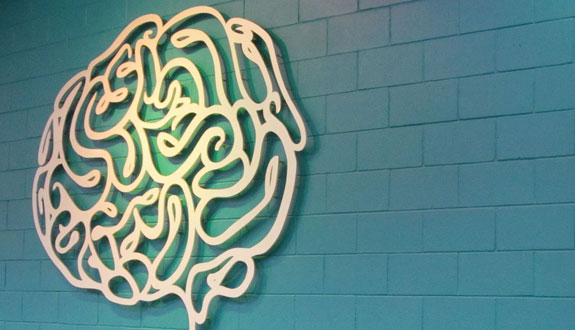Study: LSAT Prep with Blueprint Makes You Smarter
- by
- Aug 24, 2012
- News
- Reviewed by: Matt Riley


A study in neuroanatomy from UC Berkeley using students from Blueprint LSAT Preparation classes verifies what we at Blueprint LSAT Prep have long suspected: studying for the LSAT makes you smarter*. In fact, reading the word “neuroanatomy” probably just increased your IQ at least incrementally.
The study, which exclusively used Blueprint LSAT Prep students enrolled in our in-class, three-month course of LSAT study as test subjects, found that when compared with a control group not training for the LSAT, Blueprint students exhibited “decreases in radical diffusivity (RD) in white matter connecting frontal cortices, and in mean diffusivity (MD) within frontal and parietal lobe white matter.” Yeah, baby.
Um, What?
The study itself is awfully dense. But in a nutshell, the study explains that decreased RD is “related to increased myelination.” And myelin, according to Wikipedia, surrounds neurons and facilitates neural impulses. So decreased RD is a really good thing.
The study also states that decreased MD “has been related to the proliferation and/or growth of astrocytes.” Wikipedia tells me that astrocytes are the most abundant cell in the human brain and do fun things like providing nutrients to nervous tissue and maintaining extracellular ion balance. I don’t know about you, but I’m all about maintaining my extracelluar ion balance. So, place another check in the “good for the brain” column.
From what I can glean then (in my humanities-major-reading-a-scientific-article kind of way) is that it appears that decreased white matter in these two areas has been linked to more brain cells and better communication between them. So really, what this means is that taking a Blueprint LSAT class makes you smarter**. Or, in neuroanatomy speak, the study “suggest[ed] that changes in LSAT scores were driven by reasoning gains.”
Why Did It Work?
The study only discusses the physical fact of decreased RD and MD in white matter. However, we have a theory on why studying for the LSAT correctly would increase the cells and the connectivity between them in your brain.
Essentially, Blueprint LSAT Prep classes teach logic, reading skills, and the best way to evaluate arguments. The process retools the way in which students approach facts and arguments, teaching them how to think critically and analyze. Such a process can’t help but make one better at reasoning and reading critically – both actions that rely on high order brain function.
Why Blueprint LSAT Prep?
Because the LSAT tests critical reasoning and reading skills, rather than rote memorization, students can’t “cram” for the test. In fact, the longer (within reason) students have to learn these skills and reinforce them through repetition, typically the better they perform LSAT test day because such a process benefits from a longer course of training. As the study states: “We selected the Blueprint Test Preparation course as the training paradigm because it provided more classroom time than other local programs: 100 [hours] distributed across three components of the LSAT.”
And because Blueprint has an average LSAT practice exam score increase of 15 points (other LSAT prep companies don’t even publish their score increases), it also suggests that we’re the best course to take. So if you’re going to study for the LSAT, choose Blueprint, the LSAT prep company preferred 3 to 1 by brain white matter everywhere.
*The folks who put on the study would roll over in their lab coats if they saw this. What really happened is that “reasoning training altered multiple measures of white matter structure in young adults.” But that’s so much longer to say.
**Kindly refer to footnote #1 again.
Search the Blog

Free LSAT Practice Account
Sign up for a free Blueprint LSAT account and get access to a free trial of the Self-Paced Course and a free practice LSAT with a detailed score report, mind-blowing analytics, and explanatory videos.
Learn More
Popular Posts
-
logic games Game Over: LSAC Says Farewell to Logic Games
-
General LSAT Advice How to Get a 180 on the LSAT
-
Entertainment Revisiting Elle's LSAT Journey from Legally Blonde








